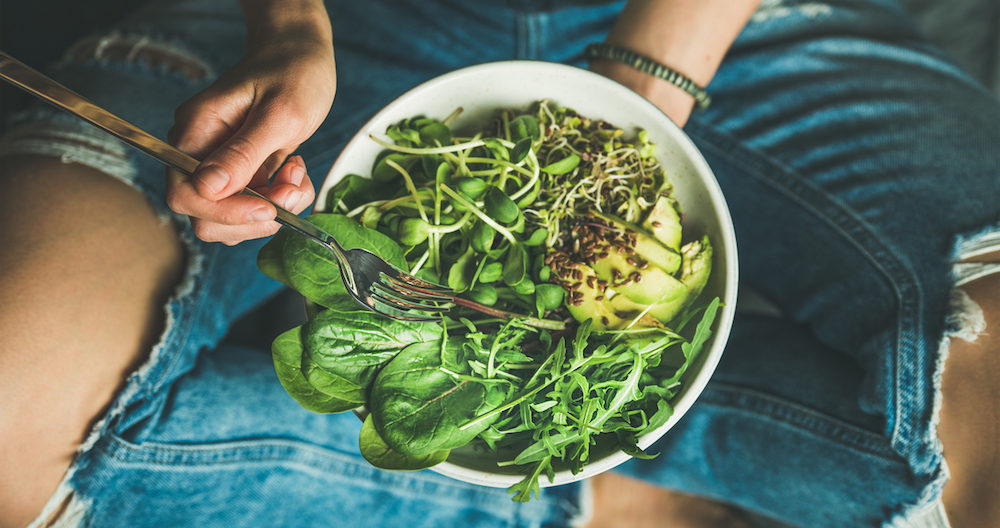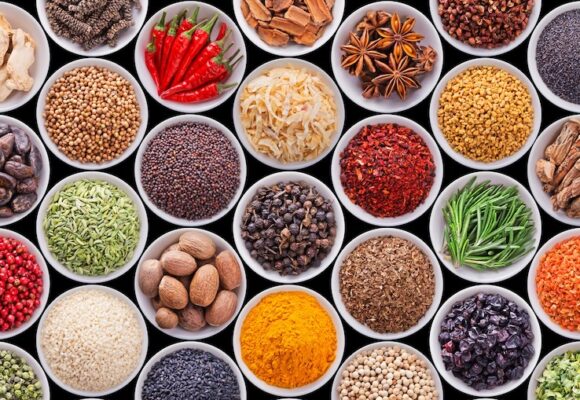
Vegan, vegetarian, gluten free, dairy free, low FODMAP, paleo. The list of dietary trends that now dictate much of what the modern consumer puts on their plate can be dizzying. Love it or hate it, there’s no denying the power of these trends, and whether followed for medical, lifestyle or even personal branding reasons, they all point to one thing: health is a currency that consumers have embraced, and its value is rising rapidly.
Macadamias are ideally placed to play in the lucrative diet trend space, adding further weight to their reputation as an exceptionally versatile ingredient. Ideal for consumers seeking to up their personal health and wellbeing game, or manufacturers with their eye on the plant-based or ‘free from’ product space, macadamias can deliver the taste, texture, indulgence and health cues that are widely sought by consumers – whatever their approach to food. Here we take a look at some of the most prevalent diet trends in both Asian and Western markets.
Consumers take control
In a presentation to the Australian macadamia industry, Steve Cox of Havas Worldwide explained that with smart phones now making information so easily accessible, people’s world views are being largely formed by online content. At the same time, trust in traditional power structures like government and institutions is falling notably. When making purchase decisions, consumers are now more likely to trust the ratings and opinions of other like-minded people, rather than the claims of brands, government or institutions.
Intersecting with this is the finding in our recent global trends research that ‘control of health’ is one of the five key macro trends driving food and beverage purchases right now.
The upshot of this is that in the past, a particular approach to diet may have been on the basis of medical advice off the back of an official diagnosis. However, people are now bypassing medical professionals, and making their own decisions as lifestyle or personal branding choices – often spurred on by health and fitness bloggers, vloggers, Instagrammers, influencers and even big-name celebrities.
As a Mintel representative told a 2017 Free From Foods Expo, around half of the UK’s consumers are avoiding something in their diet, yet only 19% say it’s due to an allergy or intolerance, with many of those self-diagnosed.
It’s a phenomenon that has influenced the Australian Macadamias consumer communication strategy, resulting in some highly successful collaborations with health, nutrition and fitness bloggers in multiple markets. As third parties that consumers trust, these partnerships add credibility to our messaging and ensure our product is a relevant part of the diet choice conversation.
Vegans and vegetarians on the rise as plant-based eating flourishes
The plant-based eating trend is booming in both Asian and Western markets, with much of the growth coming from millennial consumers. Driven by a combination of long-term health and social concerns such as animal welfare and environmental impact, statistics around veganism and vegetarianism illustrate just how quickly the plant-based trend is growing, with no signs of slowing down anytime soon.
In China, where the government has encouraged its 1.3 billion people to cut their meat consumption in half, it seems the middle class is shifting its purchasing habits as incomes grow, prompting a rise in plant-based eating. It’s predicted that between 2015 and 2020, the vegan market in China will have grown 17%, the fastest predicted rate of growth globally over that period, while in Hong Kong, 22% of people have adopted some form of plant-based diet.

In Western markets, the uptake of plant-based diets is even more dramatic. The US now has 19.3 million vegan consumers – a 600% increase since 2014, while in Britain, more than 3.5 million people identify as vegan and more than 7 million as vegetarians, representing 7% and 14% of the population respectively.
14% of 16-24-year-old German consumers were vegetarian in 2017, while 10% identified as vegan. Australia, considered to be the world’s third-fastest growing vegan market, now has a 2.25 million-strong vegan population, with the number of food products launched with a vegan claim rising 92% between 2014 and 2016.
This international shift is good news for macadamias, as they fit a vegan or vegetarian lifestyle perfectly. As a delicious source of non-meat protein, our consumer promotion program leverages this advantage and we have created an impressive collection of vegetarian and vegan recipes that cater to this growing trend.

On our German blog we have a dedicated vegan recipe collection, while in Australia, we regularly promote our range of sweet and savoury vegan recipes, including Mini vegan chocolate macadamia cheesecakes, Macadamia shortbread tart with lemon coconut cream, Kale, roast vegetable, lentil and macadamia salad, Macadamia green vegie smoothie and Macadamia pina colada.
In Australia, we have leveraged the ‘Meat Free Monday’ trend that has emerged, often posting a vegan or vegetarian dinner recipe suggestion from our own collection on Facebook.
Dairy-free with a macadamia twist
Lactose intolerance is surprisingly common, with an estimated 65% of the global population having a reduced ability to digest lactose beyond infancy, with this figure up over 90% in some East Asian communities.
The strength of the dairy-free movement is evidenced by the rise of the non-dairy milk category, which in the US alone grew more than 60% between 2012 and 2017, driven largely by nut and coconut milks.

The demand for dairy alternatives has enabled us to develop and showcase the versatility of macadamias, with our dairy-free recipe cache including everything from macadamia milk, macadamia butter and macadamia cheese to macadamia mayonnaise, macadamia ice cream and even macadamia sour cream – all of which featured on our recent Australian consumer blog post, How to go dairy-free with Australian macadamias.

In China, our showcase of ‘7 macadamia nut butters to die for’ has been some of our most popular content in this market, with consumers embracing our series of simple dairy-free butter recipes that included coconut, chocolate, walnut and maple syrup, white chocolate and vanilla variants.
Our South Korean content has also leveraged the dairy-free trend, resulting in macadamia milk and macadamia mayonnaise features in partnership with influential Korean health bloggers.
In Japan, the growth has been driven by soy milk, with production at an all-time high, having doubled in the past decade. Also growing is the popularity of Amazake, a milky, sweet drink made from fermented rice. The rise of these products signals potential for macadamia milk in this market, and it’s an ingredient we often reference in our Japanese recipes.
Gluten-free goes mainstream
Now one of the best known ‘free from’ trends, gluten free diets are no longer only followed by those with Coeliac disease, with many consumers getting on board as a lifestyle choice.
The prevalence of gluten-free eating has seen the selection of gluten-free food products in supermarkets increase dramatically, and exclusively gluten-free eateries open up globally. In the US, one university has even established a gluten-free dining hall to cater to students with Coeliac disease, other gluten intolerances, or those who have adopted a gluten-free lifestyle by choice.
As a natural, gluten-free food, macadamias play perfectly in the gluten-free space, and we regularly develop gluten free macadamia recipes that regularly form the basis of blog and social media content in multiple markets including Taiwan, Germany, Japan and Australia.
Macadamias a high point in the low FODMAP diet
The Low FODMAP Diet was developed by Monash University in Australia to help sufferers of Irritable Bowel Syndrome (IBS) to manage their symptoms. FODMAPs are a collection of sugars that are not properly absorbed in the gut, which can trigger unpleasant symptoms in people who have IBS. With around 15% of the world’s population affected by this condition, this diet has gained a strong following, particularly in Western markets.

Known as a more restrictive diet, macadamias offer some welcome indulgence for those who follow it, as they are low FODMAP in doses of 20 nuts or less. Macadamias have a clear advantage in this space over other nut types, with almonds, pistachios and cashews all considered high FODMAP and therefore unsuitable for people on this diet.
In Australia, we recently collaborated with a popular health and fitness blogger, and IBS sufferer, Eat Pray Workout, to develop blog content that explains how to safely incorporate macadamias into a low FODMAP diet, with this content also shared with our Chinese audience.
Perfectly paleo
The paleo diet, sometimes referred to as the ‘caveman diet’, is based on eating whole foods including meat, fish, poultry, fruits, vegetables, nuts and seeds, while avoiding grains, legumes, refined sugar and dairy. Inspired by primitive, hunter-gatherer lifestyles of early humans, it’s a diet that has attracted plenty of attention and scrutiny in Western markets.
As a nut gathered by the Australian Aboriginal people for thousands of years, macadamias partner perfectly with the paleo diet.
Be part of the conversation
While vegan, vegetarian, dairy-free, gluten-free, paleo and low FODMAP represent some of the more widespread trends, there are myriad other approaches to food and diet into which macadamias fit seamlessly, including superfoods, clean eating, and the Mediterranean diet. No doubt it’s a landscape that will continue to evolve.
To stay across our continuing food trend conversation with consumers, be sure to follow us on Facebook (Australia, Germany, Japan, South Korea and Taiwan), or in China on Weibo or WeChat.
If you would like to discuss opportunities to incorporate macadamias in new product development, please contact Australian Macadamias Market Development Manager Lynne Ziehlke.


